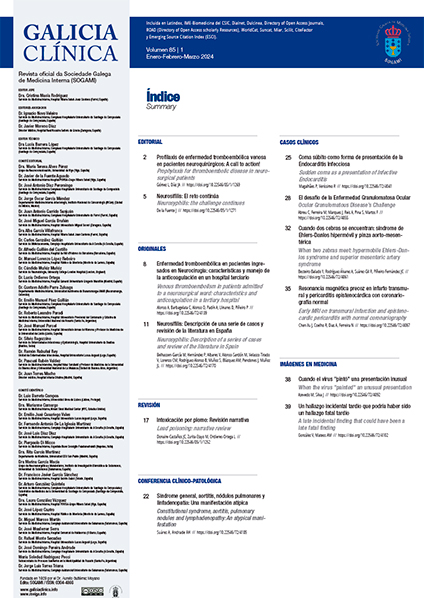Abstract
A 53-year-old male presented in the emergency room with two hours of intense squeezing retrosternal pain, irradiating to both arms, hyperhidrosis and nausea while resting. On admission, myocardial necrosis markers were in the normal range, EKG demonstrated ST elevation on inferior leads and transthoracic echocardiography showed hypokinesis of mid- and apical segments of inferior wall and inferior septum. The patient was referred to coronary angiography in which it did not demonstrate significant lesions. Therefore, we considered possible revascularized acute infarction after treatment with unfractionated heparin versus coronary vasospasm. Still, a few hours later, pain relapsed, first without but afterwards with pleuritic characteristics associated with PR depression and maintained ST elevation on EKG, and Troponin T peak value at 36 hours after initial event. He began colchicine and non-steroidal anti-inflammatory drugs for pain management after suspicion of perimyocarditis. Cardiac MRI was performed demonstrating recent transmural infarction on distal right coronary artery/posterior descending artery territories including a central area of microvascular obstruction and signs of post-infarction pericarditis. Hence, the patient probably developed a rapidly established transmural infarction that was revascularized by administration of heparin with the progressing post-infarction pericarditis. This case shows the predicament of administration of reperfusion agents by allowing the rapid revascularization which is beneficial for the patient but depriving the definite diagnosis from the clinicians. It also demonstrates the importance of cardiac MRI to elucidate and confirm our suspicions.
This work is licensed under a Creative Commons Attribution-NonCommercial-NoDerivatives 4.0 International License.
Copyright (c) 2023 GaliciaClinica - Official Journal of the Galician Society of Internal Medicine (SOGAMI)


